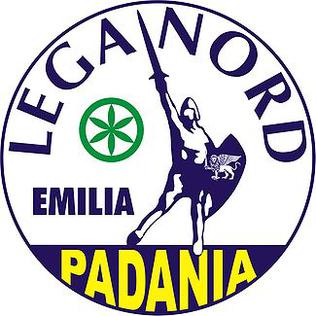This page is based on this
Wikipedia article Text is available under the
CC BY-SA 4.0 license; additional terms may apply.
Images, videos and audio are available under their respective licenses.

The Italian regional elections of 3–4 April 2005 were a major victory (11-2) for the centre-left The Union coalition, led by Romano Prodi. The centre-right coalition, governing in the national government, was defeated in all the regions it held, except for its strongholds in Lombardy and Veneto, whose population is anyway a fourth of Italian population. The elections resulted in the national government, led by Silvio Berlusconi, to acknowledge defeat and open a crisis, which resulted in the formation of Berlusconi III Cabinet, with some ministers being substituted.
Eccellenza is the fifth level of Italian football. It is a regional league, composed of 28 divisions divided geographically. All 20 regions are represented by at least one division except for Piedmont and Aosta Valley which share 2 divisions. Veneto, Tuscany, Sicily, Lazio, Emilia-Romagna and Campania also have 2 divisions each, while the region of Lombardy has 3 divisions.
A regional council in Italy is the elected legislative assembly of a region of Italy. In Emilia-Romagna and Sicily, the legislative bodies are called Sicilian Regional Assembly and Legislative Assembly of Emilia-Romagna respectively.

The Lega Nazionale Dilettanti is the league which rules amateur football of Italian Football Federation (FIGC) in Italy.

Lega Nord Emilia is a regionalist political party in Italy, active in the Emilian part of Emilia-Romagna. Formed in 1989, since 1991 it has been one of the "national" sections of Lega Nord.

Lega Nord Romagna is a regionalist political party in Italy active in the Romagna.

The Politics of Emilia-Romagna, Italy takes place in a framework of a presidential representative democracy, whereby the President of Regional Government is the head of government, and of a pluriform multi-party system. Executive power is exercised by the Regional Government. Legislative power is vested in both the government and the Legislative Assembly.

This page gathers the results of elections in Emilia-Romagna.

The Italian regional elections of 1970 were held on June 7. Even if the regional system was conceived by the Italian Constitution in 1948, the five autonomous regions were the sole to be immediately established. The fifteen ordinary regions were indeed created in 1970 with the first elections.

The Italian regional elections of 1975 were held on June 15. The fifteen ordinary regions, created in 1970, elected their second assemblies. Following the 1971 census, Piedmont, Veneto and Latium had ten more seats each.

The Italian regional elections of 1980 were held on June 8. The fifteen ordinary regions, created in 1970, elected their third assemblies.

The Italian regional elections of 1985 were held on May 12. The fifteen ordinary regions, created in 1970, elected their fourth assemblies.

The Italian regional elections of 1990 were held on May 16. The fifteen ordinary regions, created in 1970, elected their fifth assemblies.

Vasco Errani is an Italian politician. He was a founding member of the Democratic Party (PD), which he has left on 22 February 2017, to join the Democratic and Progressive Movement, a party founded by the former PD left-wing minority. He has been President of Emilia-Romagna from 1999 to 2014, being the longest-serving one of all time. Errani is one of the longest-serving governors in the history of the Italian Republic.

Stefano Bonaccini is an Italian politician and member of the Democratic Party, he is the President of Emilia-Romagna since 24 November 2014.

The Italian regional elections of 16 April 2000 were won by the House of Freedoms coalition, led by Silvio Berlusconi.

The Italian regional elections of 1995 were held on April 23. These regional elections were the first ones that were held with the new electoral law called "Tatarellum".
The Italian Regional councils are composed as follows:

Regional elections in Italy will talke place during 2019 in 6 regions out of 20 including Abruzzo, Sardinia, Basilicata, Piedmont, Calabria and Emilia-Romagna (November).
















